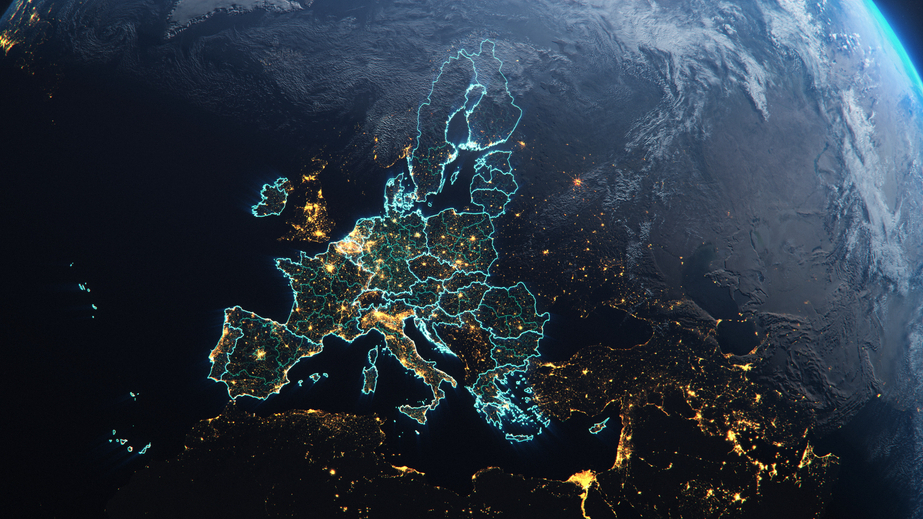
The EU is chasing net zero autonomy, but at what cost?
A new amendment to the EU’s net zero industry act has expanded the list of strategic technologies to include nuclear and fusion technology, increasing the range of risks it is willing to take on
The European Parliament’s industry committee has voted to amend a vital piece of its green industrial policy: the Net Zero Industry Act.
The committee voted in favour of a broader scope – meaning that the Act, which guides the EU’s green deal plan, is now targeting more technologies across a wider range of industries.
Nuclear energy technology is part of the amendment to a regulation that targets self-sufficient decarbonisation. The EU industry committee also did not exclude the Natura 200 areas from deployment plans. Considering the environmental, health, security, and biodiversity risks of the amendments, the costs of energy self-sufficiency seem to be rising.
Without these steps to lower the administrative burden, speed up processes, and increased public investment in our industry and innovation, Europe would face decarbonisation by deindustrialisation

The Net Zero Industry Act
The Net Zero Industry Act carries regulatory weight. It is the backbone of the EU’s green industrial policy. It determines which technologies and industries are considered strategically vital for decarbonisation and where capital is expected to flow. Most importantly, it provides an indication which way the political winds in Brussels might blow.
Originally, eight technologies were identified as “strategic net zero technologies” – solar PV, onshore and offshore wind, battery technology, geothermal energy and heat pumps, fuel cells and electrolysers, biomethane and biogas, grid technologies and carbon capture and storage.
Once a technology makes it into the list, it is eligible for additional preferential treatment. According to the EU: “Whilst all net-zero technologies benefit from the provisions in this regulation, strategic net-zero technologies enjoy additional benefits, such as benefitting from the resilience criterion in auctions and the possibility to become Net-Zero strategic projects”.
At the core of it all is a goal of autonomy and self-sufficiency in these strategic energy technologies. Officially, the goal is to ensure that by 2030, 40% of annual deployment needs in clean energy technology are met by European manufacturing capacity. Additionally, the EU is targeting a minimum 25% market share in these technologies.
This is part of what European policymakers have termed “open strategic autonomy”.
Ghosts of the past
The quest for self-sufficiency is not recent but has recently accelerated. The Russian invasion of Ukraine exposed the EU’s energy sector vulnerabilities. In 2021, Russia accounted for 45% of the EU’s gas imports and half of its coal imports. Russia was also its largest source of petroleum products.
Dependence and vulnerability are ghosts of a recent past for Brussels. By amending the Act, the EU’s parliamentarians hope that they might save the EU from being haunted.
“Without these steps to lower the administrative burden, speed up processes, and increased public investment in our industry and innovation, Europe would face decarbonisation by deindustrialisation”, said Christian Ehler – a member of the EU parliament.
The cost of self-sufficiency
Self-sufficiency of clean energy technologies for the EU is an ambitious aim. The EU currently imports €13.8 bn worth of green energy technologies. In solar and biofuels, the EU faces a trade deficit – it imports more than it exports. Only in the case of wind turbines is there a surplus of €3.2 bn.
The EU’s highest exposure to foreign suppliers is in solar panels – over €9 bn. This figure has risen since 2018 when solar panel imports were just over €4 bn. The problem is exacerbated by the fact that China controls 80% of the solar PV supply chain.
The scale of the problem seems to have prompted a willingness to pay the price. The highest cost to be paid is that of nuclear energy’s inclusion in Europe’s energy transition.
The new amendments designate nuclear fission and fusion technology as strategic. Designating nuclear energy as renewable, for the EU, has always been a divisive issue. Nuclear energy has low life-cycle emissions but depends on a finite supply of uranium and produces radioactive waste.
The EU countries do not have one common stance on the issue. Some, such as Spain and Germany have committed to a phase out. Others led by France, have plans to expand capacity. Even in the face of the 2022 energy crisis, the EU was reluctant when it came to putting the nuclear energy option on the table.
The reluctance reflected backlash from investors. In 2022 when the EU proposed a green taxonomy with gas and nuclear listed within it, the UN PRI, an investor network said:
“The technical screening criteria for nuclear energy [and gas] marks a deviation from an environmental science-based assessment of economic activity and performance aligned with the Paris agreement”.
There are also other costs of the EU’s rule change: heightened biodiversity risk being one of them. It remains unclear how the plan treats the Natura 200 sites – the world’s largest coordinated network of protected areas.
In November, at the EU’s plenary session in Strasbourg, the European Parliament will determine not only how the EU pursues net zero autonomy but also the cost it is willing to pay to get there.




